Contents
Introduction
Anyone with permission for a report can create a view for that report. Views are only available to the owner/author and administrators until they are set as publicly accessible. Administrators can then assign user and user group permissions for these shared views to determine exactly who can see them. Non-administrators will see only the views they have been given access to.
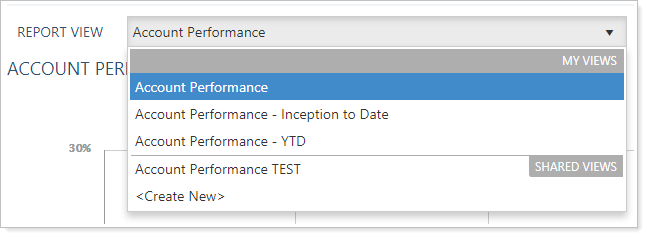
As an administrator, you can identify who owns views and who last modified them (which provides an audit trail), and you can assign views to a view set if you have frequent groups of permissions that you assign.

Tips and Best Practices
-
Use helpful names for views so you can easily identify what they are in the future.
-
Your Support team can share views with end-clients to help with troubleshooting, so make sure the view names you use sound professional.
-
If users or end-clients are having trouble, share a view with them and allow them to clone it.
-
Users must own at least one view. It can be shared or private.
-
There are a number of ways that users can be given permission to a view, so if you remove access to a view and the user still sees it, you'll need to check all the permissions the user might have for that view.
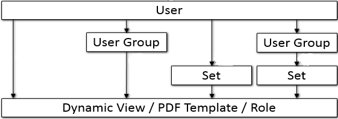
Assign a View as Publicly Accessible
A view must be marked as publicly accessible before it can be added to a view set or assigned to a user or user group. If it is not publicly accessible, it can only be viewed and edited by administrators and the user who created the template. Anyone with permission for a report can create a view for that report.
Public views will be available to users who:
-
Have been granted roles that have permission for that report page
-
Belong to a group that has been granted permission for that report page
-
Have access to all reports (such as administrators)
To assign a view as publicly accessible:
-
From the Reports menu, click a report that contains a view you want to use.
-
In the Report View list, select the view you want to use.

-
Click Edit.
-
Select the Mark as publicly accessible check box.
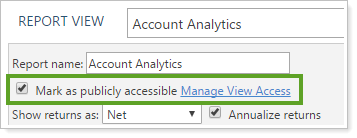
- Click Save.
Note
If you click Save As New, the Mark as publicly accessible check box will be cleared. You will need to edit the report to set it as publicly accessible. This reset occurs for any report when you Save As New.
Assign and Edit Views
Once views have been created for a report, administrators can assign permissions to users and user groups.
To assign and edit view permissions:
-
On the Setup menu, click User Management.
-
In the Manage list, click Views.
-
Click Edit for the view you want to assign permissions to.

-
In the User Groups/Users tab, select any user groups or users that shouldn’t have permissions for the view.
-
Click Remove.
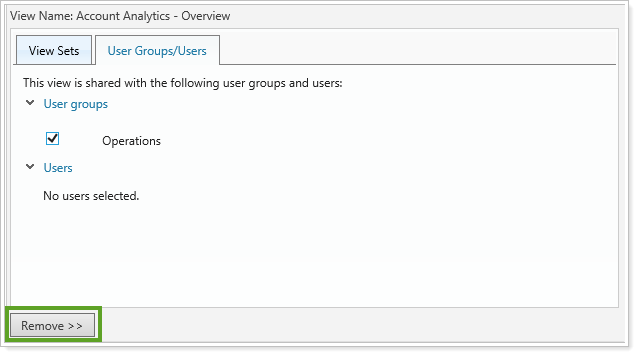
-
In the Available User Groups tab, select the user groups that should have permissions for the view.
-
Click Add. The users in the user group will then see the report views in the list of views available on each report page.
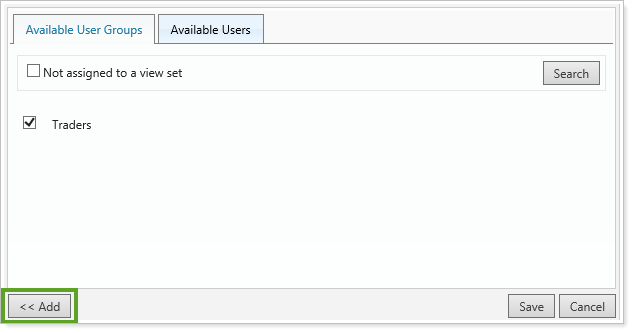
-
In the Available Users tab, select the users that should have permissions for the view. You can narrow the list by selecting the Not assigned to a view set check box, and then clicking Search.
-
Click Add.

-
In the View Sets tab, click any view sets that you don't want to include the report view in.
-
Click Remove.
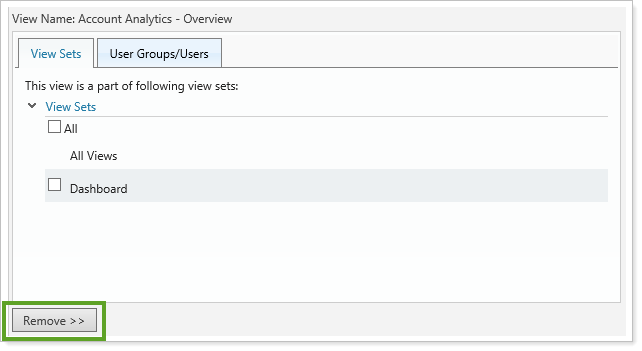
-
In the Available View Sets tab, select the view sets that you want to include the report view in.
-
Click Add.

-
Click Save.
Delete a View
You can delete a view even if others have permission to see it, and even if it's included in view sets. There is no "in use" limitation for deleting. If you delete a view, it will silently drop from any view set it was included in.
To delete a view:
-
On the Reports menu, click the report that has the view you want to delete.
-
In the Find Data For list, select the view you want to delete.

-
Click Delete.
-
Click Delete in the confirmation message.


